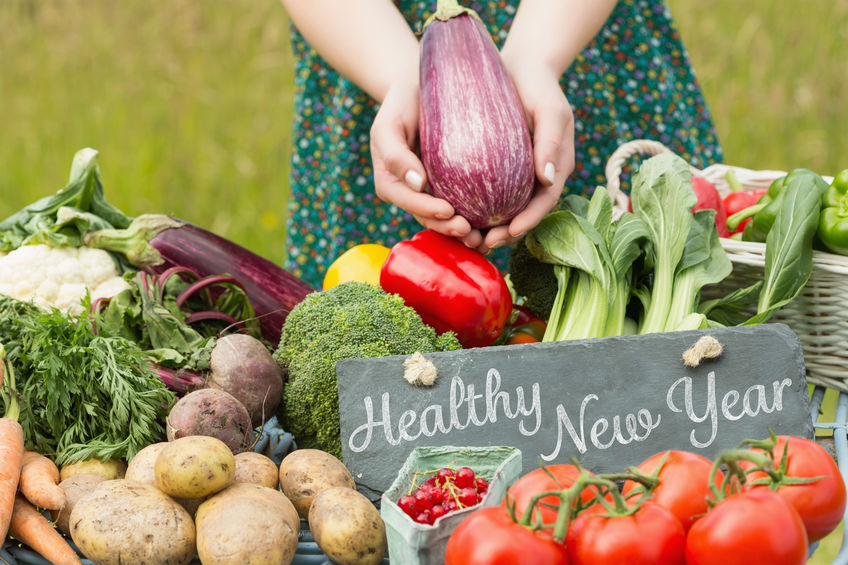Have you ever wondered why as the weather turns cold, we think about hot soups and roasted meats? Or why, during the span of hot weather, we are refreshed with fruit and salads? If you recognize the cycle, you will plainly see it is seasonal. Seasonal eating is nothing new
Before modern transportation of food, people ate what was locally available at the time. No strawberries and cucumbers in winter, no squash or apples mid-summer. Savory soups and stews full of root vegetables in the fall to warm us up and fill us up. Traditionally, it isn’t just the sweets and treats of the holidays that add a little extra fat around our edges, it is also the body collecting what it needs to stay warm. In the Spring we can outdoors and start looking towards lighter fare on our plates – and we tend to shed some of the winter “fluff.” Apparently seasonal eating is programmed into humans naturally.
What produce is available seasonally?
Seasonal eating doesn’t deprive us of good nutrition. No, in fact, there are some cultures that believe eating local foods seasonally actually helps the body adjust to the environment. In addition, we know that eating a diet rich in protein and vegetables helps our bodies and brain function.
Although more than half of the fruits and vegetables we get in our stores are from California’s Imperial Valley, we are lucky to live in the Midwest, Indiana, where many crops are grown and available. That means we can usually find a variety of seasonal crops in the grocery store and local farmer’s market.
For instance, here is some of what is available season by season:
Spring (March through May)
- Asparagus
- Beets
- Celery
- Greens
- Onions
- Peas
- Radishes
- Strawberries
Summer (June through August)
- Artichokes
- Beans
- Blue- and Blackberries
- Corn
- Cucumber
- Eggplant
- Melons
- Pepper
- Tomatoes
- Zucchini
Fall (September to November)
- Apples
- Broccoli
- Cabbage
- Carrots
- Cauliflower
- Onions
- Potatoes
- Squash
Winter (December to February)
- Apples
- Brussels Sprouts
- Cabbage
- Carrots
- Celery
- Leeks
- Onions
- Potatoes
- Pumpkins
- Turnips
You will notice the beta-carotene rich foods in the fall, a nutrient that supports the immune system during the cold and flu season. In summer when fruits are available with their juicy sweetness, we get energy and fluid for the long, hot days. We also get a boost of antioxidants to help protect us from sun damage. Fish in winter is packed with vitamin D and omega-3s, which are said to help us deal with short, dark days and Seasonal Affective Disorder.
As far as proteins are concerned, meat and fish are generally available to carry our diets through all seasons. Add to that the addition of nuts, seeds, and beans harvested and dried in spring for use all year long. Which brings me to another part of eating in the past.
Preserving and Drying Food Extends Seasonal Eating
In the past, a different time, many people canned and preserved foods to store in the cellar so they could be used all year long. Not many of us have the time to engage in more than the one-off day preparing jam, let alone days to can the harvest of tomatoes. As well, we don’t can and dry meats, either. We go to the grocery store for preserved foods packaged in microwave-quick packages and cans of salty water.
Eating fresh and seasonally, especially from food grown at local farms and purchased at farmer’s markets, means we are not ingesting the preservatives and other chemicals added to the food on the grocery shelf.
Even if you make a slight change to eating fresh fruits, produce, nuts, and seeds as they come available at local farms, you will reap the benefits to your health.
Eating well is part of health. Staying active and exercising is another. For some, getting out of the chair and going to the gym is tough. Here at Constant Quest CrossFit, we have heard those laments eventually (quickly, for some) turn into enthusiasm that it is time to go to the gym! It definitely isn’t because we take it easy on our members. No, it is more that the change in their appearance and the way they feel is a great motivator.
But that’s not all of it. There is something really special about the community of Constant Quest CrossFit members in Danville, Indiana. It’s a “family” members choose to have. We call it our gym-ily. At Constant Quest we encourage and support each other, and we have FUN. We build healthy habits that are good for the body and the mind – and the spirit. Find out more at our website or call/text us at 317-605-7146. We would love for you to join us for a free class to get a good workout and some kind words.


